Take on Sustainable Design Challenges
Learning Objectives
After completing this unit you will be able to:
- Explain why sustainable business practice matters to design.
- Describe why design matters to businesses that recognize the strategic importance of sustainability.
Consumers, investors, governments, and financiers are all demanding that businesses find sustainable solutions to our global challenges and, in the process, redefine their relationships with society.
Sustainability isn’t focused on a single topic, such as the environment. It is about seeking ways for a business to fully engage with society’s current challenges whether they be about health, equality, access to opportunity, the environment, or any other pressing concerns affecting our ability to thrive as a world community.
Sustainable business practice should matter to design. Why?
- We love a challenge. Designers drive business value. Design is used to solve strategic challenges for business: What matters to our customers? How will what we make embody what matters to them? And embody our brand’s values? Sustainability is arguably the most important strategic challenge for business in the coming decades. Design can help.
- Designers translate strategy into products and services. Sustainability is a strategic priority poised to transform how businesses operate. Part of this transformation will be focused on how businesses design, package, and deliver their products and services. It’s important for designers to play a central role in this discussion.
- It’s the right thing. People who design do so because they like to make things better. It’s time to get to work making things right.
And design should matter to businesses making sustainability a priority. Why?
- Good design helps build the case for action by breaking conventions, and making information and calls to action clear and visceral.
- Designers practice a proven and repeatable process for developing the kind of breakthrough ideas the world needs. More on that below.
- When designers make things with intention, the products we design are fit to purpose and delightful. This means that people who love well-designed products and experiences are more likely to adopt them at the scale necessary for meaningful change.
Build the Case for Action
Sustainable design can help make the case for solving many of the world’s long-standing challenges and injustices by talking about them in new and novel ways. Take climate change as an example, despite decades of warnings from the scientific community about the risks of climate change, global emissions have continued to not only rise but to accelerate. There are many reasons for this. One of them lies with the design of the warnings themselves.
How might the willingness to act on climate change have been different if the tens of thousands of white papers, graphs on poster board, and presentation slides making the case for action at government hearings had the benefit of good design? It certainly wouldn’t have changed the intentions of those denying science or actively fighting climate action, but it may have helped accelerate action among those who did want to act.
Consider this standard graph of rising global average temperatures.
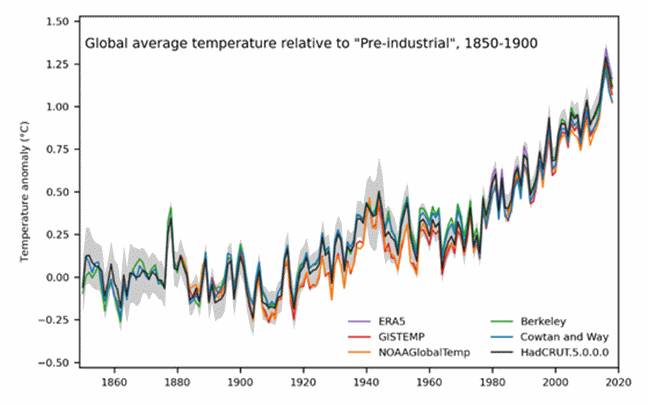 Graph of global average temperature 1850-2020, source: Met Office
Graph of global average temperature 1850-2020, source: Met Office
It’s not a bad graph. It’s a line graph that shows a rise in global average temperature.
However, compare it with these climate spirals developed via a collaboration between scientists and graphic designers at the Climate Lab.
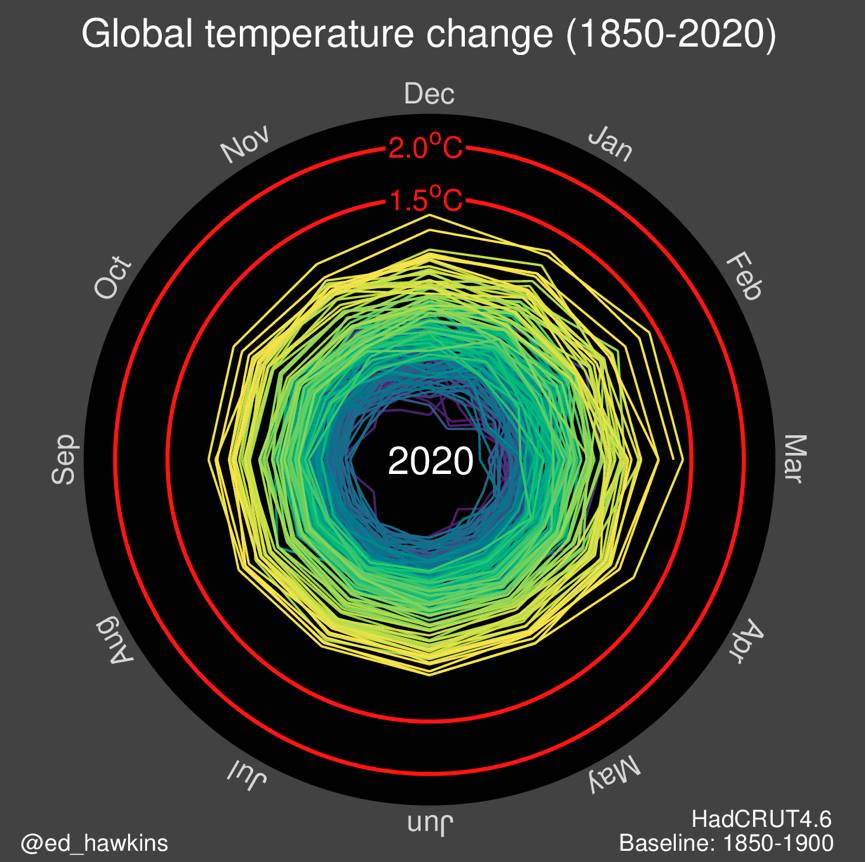 The dynamic global temperature change spiral created by Climate Lab is significantly different from a standard graph, source: Climate Lab Book, CC BY-SA 4.0
The dynamic global temperature change spiral created by Climate Lab is significantly different from a standard graph, source: Climate Lab Book, CC BY-SA 4.0 Put It Into Practice
Here’s an exercise for you. We won’t test your work, but it’s a great way to add this kind of approach to your growing set of design skills. In true designer fashion, go ahead and share your work with a colleague or mentor for critique. Consider the following thought experiment for your business.
Can You Make Data Dynamic?
Your business weighs risks, opportunities, external dependencies, and competition during its strategic decision-making process.
- How could the data your business uses to make these decisions be visualized more dynamically?
- What visual perspective does your information design place the viewer in?
Could Climate Risk Be Included?
The effects of climate change can be seen and felt today, and their impacts on society and business will increase if global emissions are not significantly reduced. This poses significant risks for businesses around the world.
- Does that risk show up anywhere in the tools your executives use to forecast or assess risk?
- How might climate risk (and opportunity!) be made more apparent, and how much should it be weighted vis-a-vis other risks?
Offer a Proven, Repeatable Process for Innovation
Staying with the topic of climate change, the longer we delay on addressing its causes the faster we need to reduce global emissions. This is true because greenhouse gas emissions accumulate in the atmosphere. So, if we want to keep temperature rise to 1.5°C, we need to rapidly shift course and begin emitting far less emissions while finding ways to draw down the emissions already in the atmosphere.
Why do we want to keep emissions below 1.5°C? Because, to take one example, at 1.5°C warming, about 14 percent of Earth’s population will be regularly exposed to deadly heat waves, while at 2 degrees warming that number jumps to 37 percent.
This graph from researchers at the Center for International Climate Research illustrates emissions reduction curves calculated to keep the world below 1.5° of warming. As you can see the paths to 1.5° get steeper and steeper as each year passes.
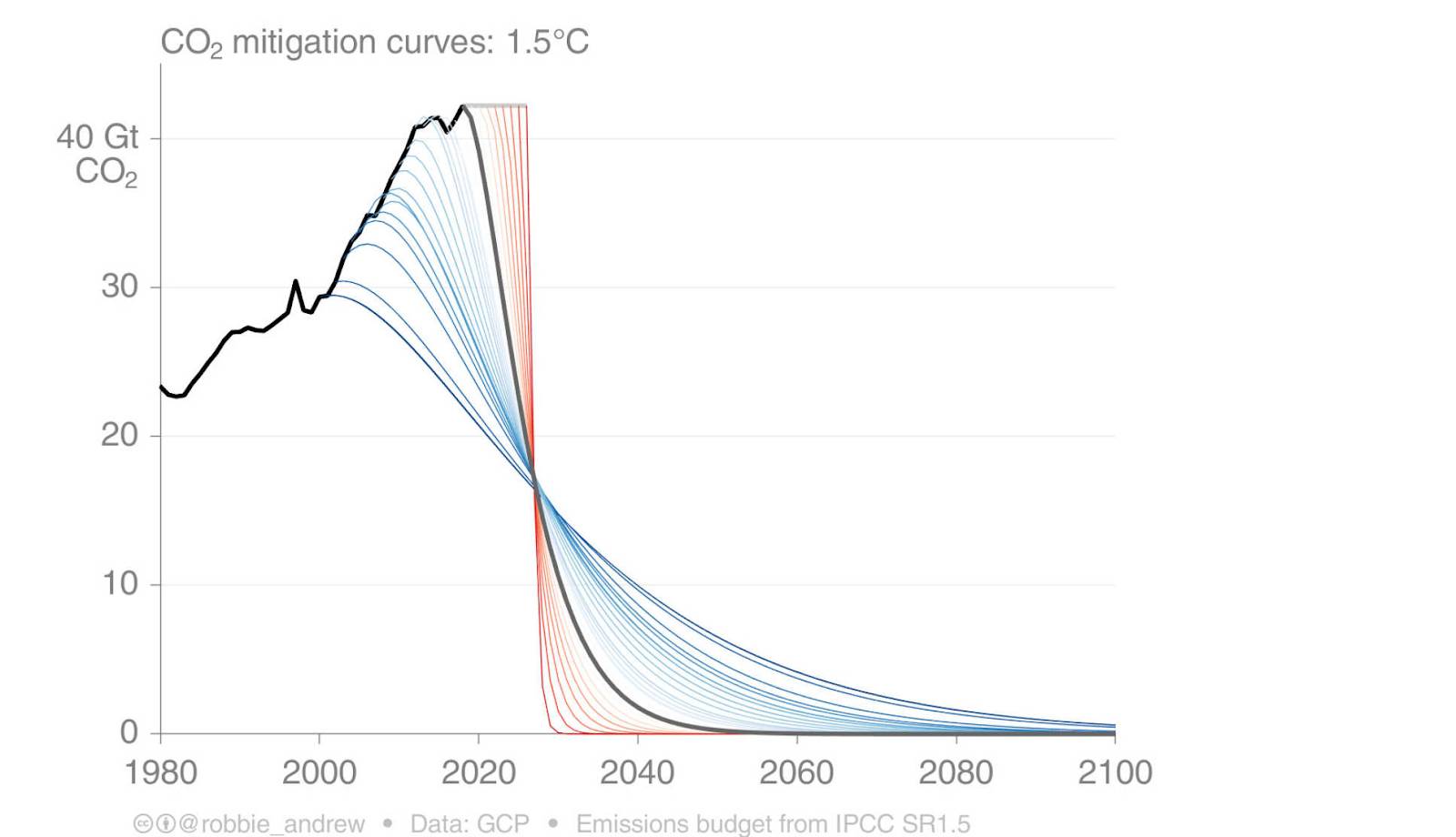
These curves describe what is often called the energy transition. Transitioning our electricity, transportation, and building heating off of greenhouse gas (GHG) emitting fossil fuels and onto renewable energy and the zero-carbon fuels of the future.
Because this transition will affect every sector of the economy, it will involve the work of engineers, policymakers, economists, financiers, and many, many others.
It will also require design.
To deliver on the opportunities presented by the energy transition, the world at large—including the world of business—needs a proven process for innovating quickly and at scale. One of the reasons design consistently drives business value is because the practice offers a proven and repeatable process for successful innovation.
Traditionally, design and design thinking are described as a process executed in interrelated phases: Empathize, Define, Ideate, Prototype, Test, and Iterate.
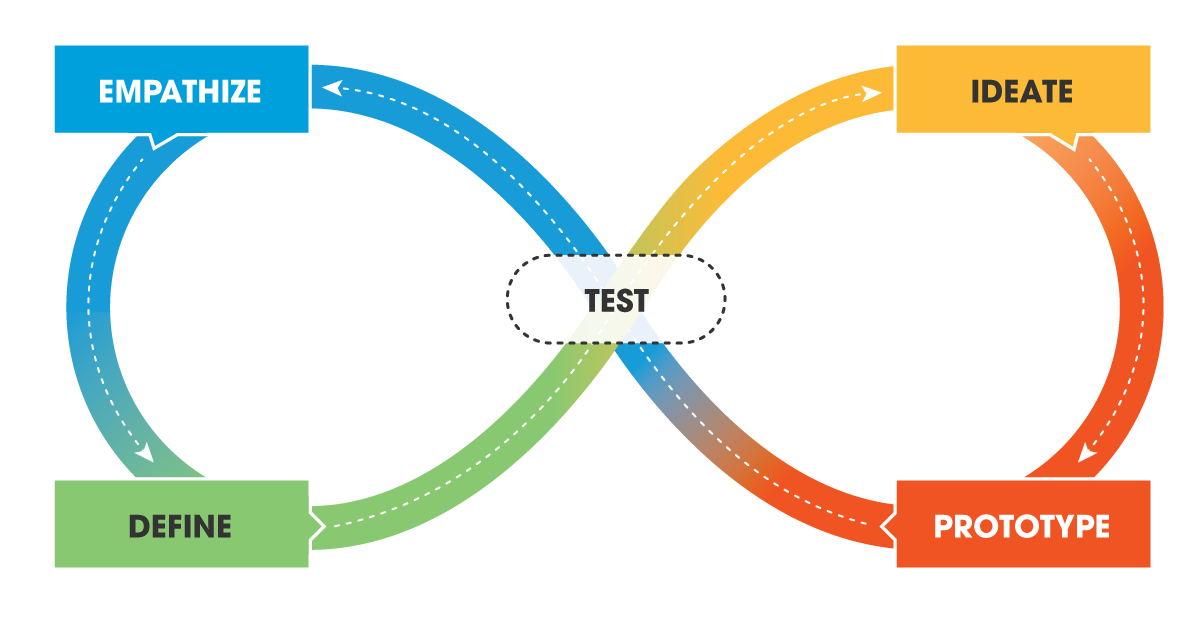 The design thinking process: a proven, repeatable method for innovation
The design thinking process: a proven, repeatable method for innovation
Put It Into Practice
Here’s another exercise for you. Your work won’t be tested. Perhaps you can share your work with a colleague, manager, or mentor to get feedback.
Apply this design process for innovation to these challenges.
- Design a new digital experience that will make the energy transition simple, delightful, and effective. Here are some examples you can use if you wish.
- Interfaces that communicate to homeowners how much energy the solar panels on their roof generated today, how much they sold back to the utility company, and the charge status of the electric vehicle parked in the garage.
- Data analytics on the best rooftops in a region to install solar panels, paired with algorithms that determine the best loan terms for financing their installation.
- Design for collaborations between governments and businesses in order to accelerate the energy transition. Here are some examples you can use if you wish.
- Bike infrastructure in cities that helps all ages of people get around safely, paired with electric bikes, scooters, and skateboards designed to be useful for commuting and shopping.
- Business models that turn home energy-efficiency upgrades into delightful customer experiences, paired with tax incentives to reduce energy use.
- Marketing programs that increase the demand for renewable energy, paired with federal funding to build the infrastructure for efficient transfer of wind, solar, and geothermal energy.
Create Products People Love
Because the practice of design helps people create products with intention and commit to iteration (through testing with users) the products and services that design produces are often more widely adopted and loved. As shown, the consequences of getting sustainable solutions to the world’s challenges wrong are high. Luckily, design provides an approach to getting things right.
Let’s look at a couple of examples of that kind of skill at work.
Electric Scooters: Innovation at Scale
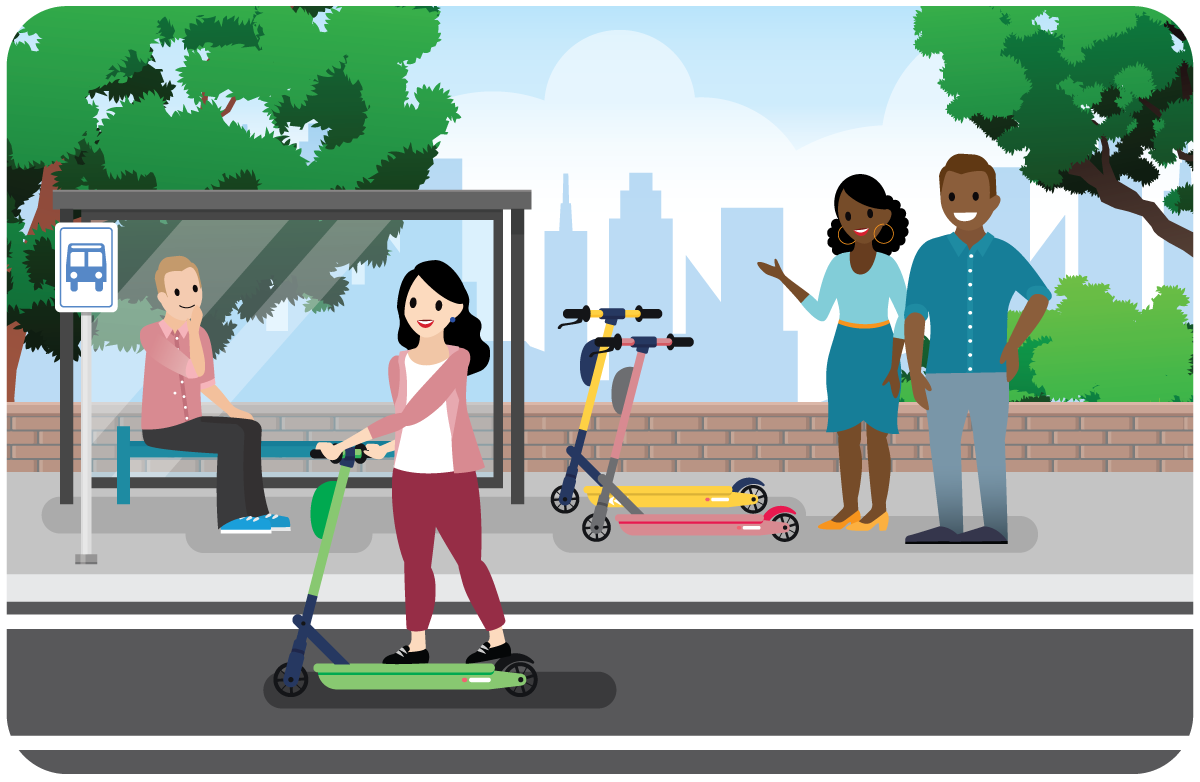 Prototyping at scale: we woke up and electric scooters were everywhere.
Prototyping at scale: we woke up and electric scooters were everywhere.
The energy transition will involve electrifying transportation. Scooters prototyped a type of electric transportation on a grand scale.
For years urban planners and environmentalists fretted about the number of vehicle miles traveled in cities for short trips. They wondered why people didn’t bike or walk on those trips. And then electric scooters hit the streets.
Yes, like everything, there were trade-offs. Scooters created some challenges while they solved others: cluttering sidewalks, causing conflict with cars and pedestrians, and different companies’ designs were better or worse than others.
At the same time, the rise of this new approach to urban transport represented a collective, shared design process. A range of companies experimented with new business models and new product designs, new digital and physical customer experiences, working the kinks out of a new customer experience in real time in cities across the world. Despite the challenges, that’s the kind of large-scale sustainable innovation we will need if we're going to accelerate the energy transition and keep global warming below 1.5 C.
Despite the challenges, that’s the kind of innovation we will need in the coming energy transition.
Home Automation: Designing the New
To date, the energy transition has largely been the domain of electrical engineers, development finance managers, and regulators.
While this group has done an admirable job increasing efficiency rates of solar panels and figuring out how cars can be run on batteries, we need to design experiences, not just regulate and engineer them.
One great example of energy transition design is the growing number of well-designed zero-emission home-automation systems. These systems allow homeowners to track and control the performance of solar panels on their roof, the batteries storing the power those panels generate, and the charging of an electric vehicle in their garage through easy-to-use interfaces on their phone.
Have you had to interface with your home’s fuse box when the lights went out? If you have, your fuse box probably looks like a rectangular box bolted to the wall, with a creaky door that opens to a series of unlabeled switches.
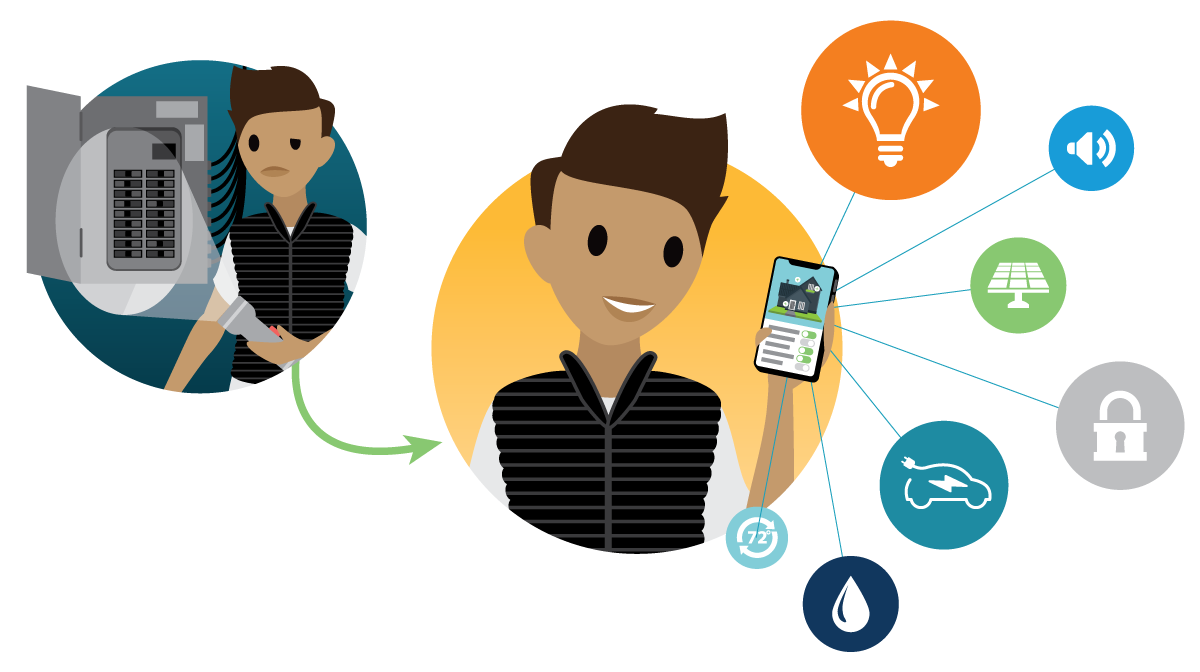 Controlling energy in the home with the benefit of design: beautiful, intuitive, well designed
Controlling energy in the home with the benefit of design: beautiful, intuitive, well designed
How might designers reimagine that experience for homeowners wanting to reduce their home’s greenhouse gas emissions? If we could design that process and experience, it would be critical to understand the daily routines of homeowners.
If we were to center that experience around our user, it would be important to work against the tendency to separate functions and features. After all, from the users’ perspective it’s all one home so shouldn’t we strive to integrate the control of the solar panels on the roof with the EV charging station in the garage with the thermostat and the monthly energy bill.
Then, once we’ve understood the context and made it possible to integrate the hardware, we would want to design digital experiences that would make all these complex technologies intelligible to people without electrical engineering training, and be something people want to buy—not something they dread having to interact with.
Put It into Practice
You may or may not be in a position to build a product or service intended to directly solve a pressing global challenge like climate change. But that doesn’t mean you can’t get creative. Here’s another exercise for you. We won’t test you on your work. But feel free to share it with a colleague, manager, or mentor for critique.
- Take a look at Project Drawdown’s table of solutions. They provide a ranked list of the top 100 solutions to climate change and related social inequities. Familiarize yourself with them. Start thinking about how your design skills might be applied to designing and scaling these solutions. Come up with a solution of your own design, but don’t hesitate to be inspired by the world around you.
The world of business, and the world at large, is in urgent need of novel, well-designed solutions to some of our greatest challenges. And design gives us the skills to help. Let’s get to it!
Resources
- External Site: Project Drawdown: Table of Solutions
- External Site: Energy Literacy (Sankey diagram of U.S. energy economy)
- External Site: Metabolic’s global energy flows diagrams
- External Site: Electric scooters aren’t quite as climate-friendly as we thought
- External Site: Are e-scooters polluters? The environmental impacts of shared dockless electric scooters